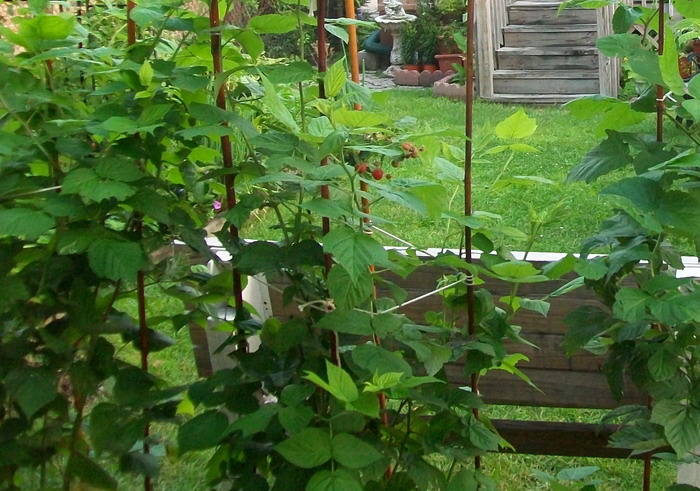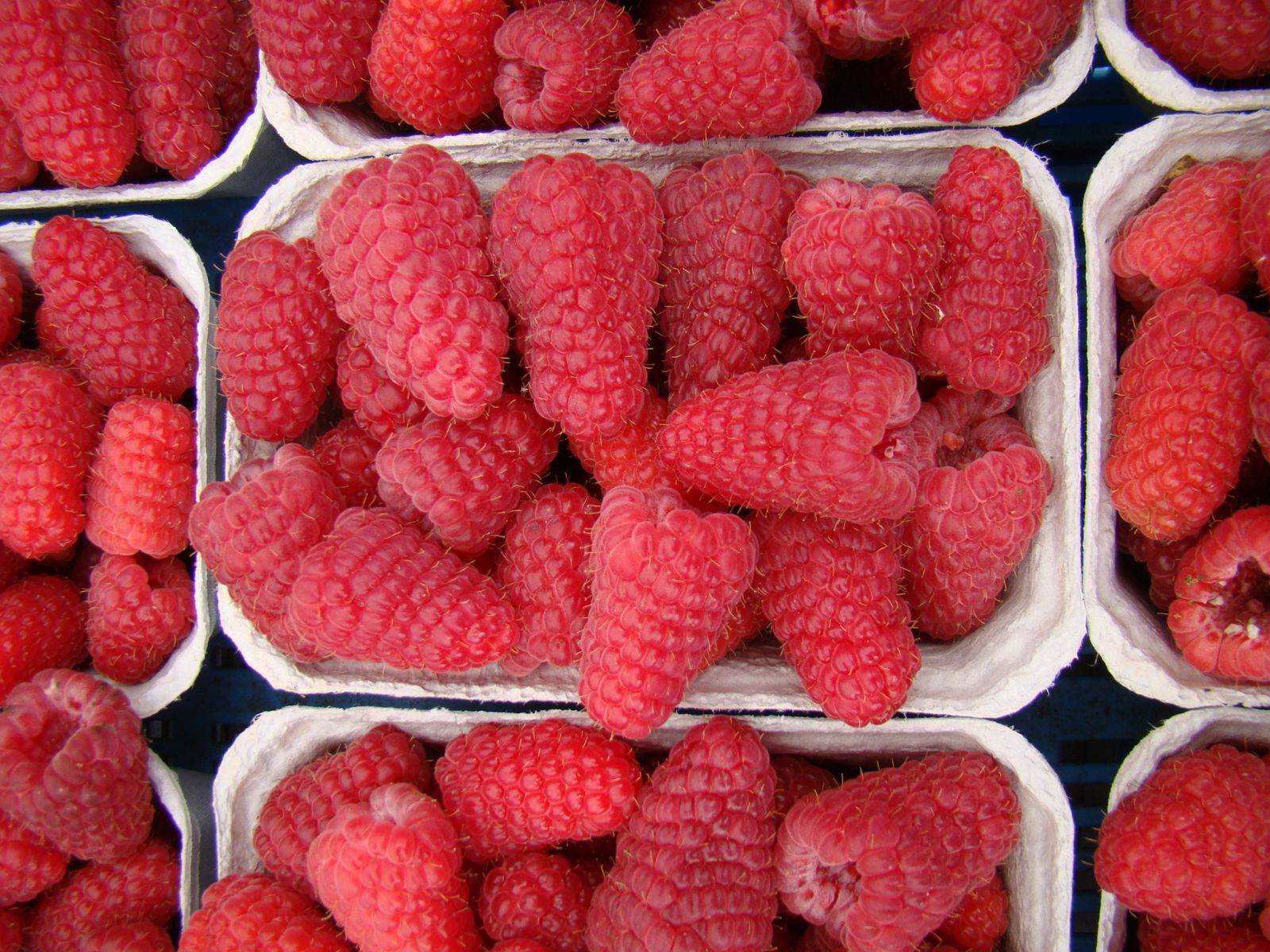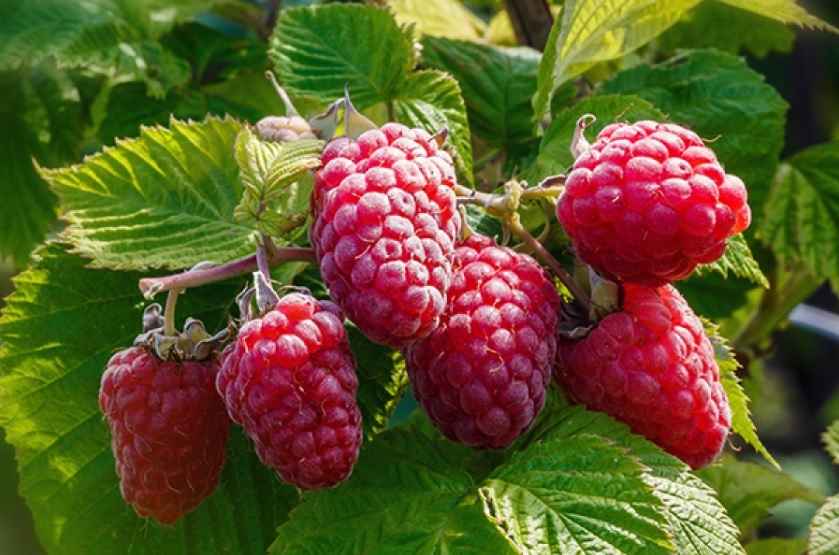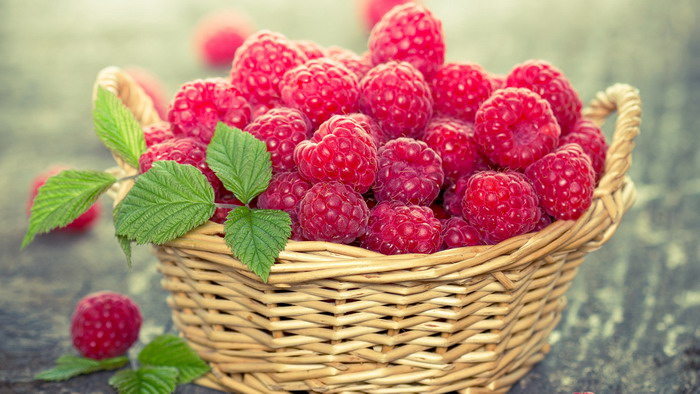One of the common berries grown by many gardeners is raspberry. Raspberry Ruby necklace is a variety that enjoys a high level of popularity in different climatic zones of our country. The plant has an average ripening period and is one of the remontants, which allows, with the right approach and a sufficient warm period, to collect up to 2 harvests per year.
Features of the variety
The raspberry bush of the Rubin variety has an average height and at the same time is distinguished by good development. On average, the height of the shoots is no more than 1.5 m. It is easy to distinguish new branches from old ones: the latter have a characteristic light gray color, their shape is straight. There are features that distinguish the Ruby variety from others. Raspberry Ruby necklace has the following variety description:
- from the very root along the length of the stem there are thorns with a red base, the number is average, slightly bent downward;
- at the end of the growing season, ruby raspberry shoots of the first year are distinguished by a red-purple color, they have a small waxy bloom;
- the plant is not characterized by such a phenomenon as pubescence;
- depending on the compliance with the growing conditions, up to 7 replacement shoots can be formed on 1 seedling;
- when a constant temperature regime is set to a positive value, including nights, in the spring, new shoots quickly appear from the root, capable of producing a crop in the same season;
- leaves of medium size, almost even;
- stems are thin enough, easy to bend and break.
Important! According to gardeners, this type of raspberry has average resistance to high temperatures, as well as drought resistance.
Characteristics of berries
The type of varietal berries is classic, presentable. On average, the weight of one fruit varies from 5 to 8 g. The shape is regular, slightly elongated, close to a cylinder. The pulp has a characteristic sweet and sour taste, delicate texture, a fairly large amount of juice. Experts, giving an assessment on a tasting 5-point scale, determine the indicators of taste characteristics in the range of 3.8-4.5 points. Productivity - from 1 bush, it is possible to collect up to 2 kg.
The following are also distinguished:
- Berries ripen before the first autumn frosts;
- From 1 hectare with seedlings, it is possible to collect up to 15 tons of berries;
- The chemical composition of berries includes: 5.6% - sugar, 34 mg - vitamin C, 1% - acid;
- The most productive are annual shoots;
- The variety belongs to the high-yielding category.
Landing rules
When choosing a place for planting plants and creating a raspberry tree, you should give preference to well-lit areas throughout the day. The soil should be saturated with various trace elements. Raspberries do not like places with a close location of groundwater; it is imperative that the selected area warms up well from the very beginning of spring. Due to the structural features of the plant, it is required to provide good protection from the winds, since the seedlings may break. The variety does not tolerate drafts.
In winter, there should be a sufficient amount of snow on the site to protect the roots from freezing, since the maximum withstanding sub-zero temperature is -24 ° C.
Based on the above, we can conclude that it is better to give preference to sites located in the southern side.Experts consider the ideal option to be land located near various buildings, but on condition of a short time with the appearance of a shadow from the latter. The choice of such a place allows you to create a certain microclimate that contributes to the soonest abundant fruiting.
It is advisable to tie the stems to the trellis, which is justified by the high indicators in height and their small thickness. Planting seedlings can be done both in the spring and in the autumn. When choosing the second option, all work is completed before frost, so that the plant has time to take root and develop a strong root system. It is better to choose seedlings with a closed root system, which contributes to the rapid formation of developed and strong roots, and then shoots. With this option, the first fruiting occurs 3 months after the start of the warm season.
For seedlings, pits are prepared, the width and depth of which should not be more than 30 cm. In order to increase the yield, the recommended value between plants of 1 m should be observed, between the rows the indicator is doubled. Adequate distance contributes to good ventilation and reduces the risk of developing various diseases. Organic fertilizers should be placed in the hole. Abundant watering is required: at least 5 liters of liquid per seedling.
The entire area can be fertilized using the following mixture in advance:
- 2 buckets of humus;
- 1 cup superphosphate and potassium sulfate.
The indicated amount is suitable for processing 1 m2. After adding the mixture, it is advisable to dig up and loosen the soil well.
Care and reproduction
If the rules of care are not followed, it is not possible to evaluate all the described advantages of the variety. Among the main factors contributing to a high-quality harvest are:
- Pruning, feeding and watering carried out on time;
- The number of shoots that can bear fruit;
- How many fruits are located on the handle;
- Average berry weight, directly related to the first item on this list;
- Weather conditions during the growing season;
- Carrying out mulching of the space between the rows with humus. On average, procedures are required from 1 to 2 times a month. This promotes the growth of the root system, which, in turn, affects not only the harvest, but also the appearance of new stems;
- In order to reduce the risk of the appearance of various parasites after harvest, it is advisable to remove the ground part of the plant and not store it on the site.
Care also includes protection from pests and diseases. For this purpose, at the stage of bud appearance, the raspberry is treated with tansy infusion. Cooking requires 350 g of dry herb, steamed in 10 liters of boiling water. Spraying is carried out in the evening. To protect against spider mites and weevils, treatment with "Fufanon" is allowed until the beginning of flowering, which is repeated at the end of the season.
Variety propagation is allowed in several ways:
- Using green cuttings. One of the most common methods due to its simplicity and high level of efficiency. When it is selected, the separation of young shoots with small roots occurs. The branch is cut to a depth of 4 cm underground. It is imperative to fertilize the stalk and ensure timely watering. In order for the plant to take root faster, you can soak the stalk in a solution of growth stimulating agents before planting. The use of greenhouses is allowed;
- Transplanting root cuttings. Suitable for work in the autumn period. After the end of fruiting, the root is dug up, divided into pieces no more than 3 cm in size, the latter are planted in the ground (up to 5 cm deep), watered. The soil should be fertilized and loosened;
- Seating of root suckers obtained at the end of the season. Possible if the root system is well developed. At the beginning of the vegetative period, shoots are excavated that are more than 1 year old. With proper care of the variety, 1 mother seedling is capable of producing up to 15 offspring.
The variety has practically no drawbacks, with the exception of tall and thin shoots, as well as demands on soil, watering and care. Suitable for use both in the middle lane and in the south of the country.
Important! Gardeners who cultivate Ruby Necklace raspberries note that in a harsh continental climate, with possible subzero temperatures up to the beginning of summer and early frosts (from mid-August), in most cases it is rare to harvest 2 crops. However, a high yield level remains.















